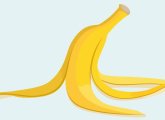KS4 science provides many opportunities for students to use and develop their mathematical skills but, as science teachers, do we currently address these explicitly or do we simply teach the mathematical skills alongside the content? Looking forward to the subject content for science GCSE from 2016 we see a section dedicated to the mathematical skills required for science. Students need to demonstrate competence to select and apply the appropriate areas of mathematics relevant to the subject as set out under each topic. There is therefore a strong argument for developing a scheme of work or sequence of lessons that explicitly addresses these skills. This technical lesson aims to introduce students to the five areas of mathematics (arithmetic and numerical computation; handling data; algebra; graphs, geometry and trigonometry) specifically addressed in the new program of study for science in a way that remains relevant to the current KS4 exam specifications;
Why Teach This?
Strong links already exist between mathematics and biology, chemistry and physics, with a good understanding of mathematics being essential to successfully studying the pure sciences at A-level and beyond. This relationship is acknowledged in the new programs of study for the sciences for first teaching from 2016 with mathematical skills described alongside content in each section of the program. These mathematical skills are not new, and most of them are required for the current syllabi, but do we address these skills explicitly in the way we teach? This lesson is intended to suggest a way of approaching maths skills in an independent lesson or sequence of lessons that aims to firmly link mathematics with science in the minds of your students.
Starter Activity
Arithmetic and numerical computation
This skill involves recognising and using fractions and decimals, using ratios and percentages and estimating the results of simple calculations without using a calculator. During this activity a chemistry context is used.
Students begin by balancing chemical equations and gain an appreciation of the ratio between the amounts of reactant and product formed. An interactive online quiz provided by the Royal Society of Chemistry is a helpful way to get the lesson started [AR1].
Encourage students to relate the mass of a compound to the mass of its constituent elements by calculating the formula mass; create your own simple worksheet to suit the ability of your students or use one of many provided online [AR2]. Kinesthetic learners may well appreciate the opportunity to weigh out different substances on a balance. You could provide accessible substances such as carbon (C), table salt (NaCl), sugar (C6H12O6), and iron filings (Fe) and ask students to weigh out the equivalent of the formula mass.
Encourage them to observe that the same number of atoms or molecules weigh different amounts depending on the type of substance. This can lead to the calculation of percentage by mass for the different elements in a compound. Take sodium chloride (NaCl) for example, the formula mass is 23 + 35.5 = 58.5, the percentage of sodium is (23÷58.5) x 100 = 39.3% and the percentage of chlorine is (35.5÷58.5) x 100 = 60.7%. Students are expected to be able to make estimates without using a calculator – so ask students to look at their answers and apply the sensible value test. In this case, do all the percentages add up to 100%? To consolidate learning students can calculate the empirical formula of a compound, which requires the use of ratios, decimals, fractions and percentages in a single question.
The empirical formula of a compound is the simplest whole number ratio of atoms of each element in the compound. Step by step instructions and examples can be found on the GCSE Bitesize website [AR3].
Main Activity
Handling data
To practise the skill of handling data, a biology context is used. Students need to be able to construct and interpret frequency tables and diagrams and understand the principles of sampling as applied to scientific data. They also need to understand the terms mean, mode and median. You could begin by carrying out a piece of fieldwork such as a grassland quadrat survey on the school playing fields; alternatively supply students with some results from a survey that they can analyse themselves. Examples, along with ideas for real surveys that you can use, can be found on the Science and Plants for Schools website [AR4].
It is usually not possible to count the entire population of a particular organism in its habitat. This means that the population must be sampled using transects and quadrats. Ask the students to calculate how many quadrats measuring 50cm x 50cm they would need to use to sample 2% of an area of 500m2. They should calculate the area to be sampled as 500 x 2 ÷ 100 = 10m2 and each quadrat would sample 0.5 x 0.5 = 0.25m2. Therefore the number of quadrats needed = 10 ÷ 0.25 = 40 quadrats (1-2 each for a typical class size). Collate the class data or provide students with a table showing frequency data for different plant species in the grassland and ask them to interpret this in order to transfer the information into a bar chart. More able students could transfer the data into a histogram and therefore relate the area underneath the histogram to the frequency of the item being counted.
The most important part of data analysis is the use of simple summary statistics, and understanding how to interpret the data you’ve collected. Students need to be familiar with the meaning of the terms mean, median and mode and how to calculate them. Using the data for their 40 quadrats students can calculate each of these types of average for a species such as clover. The mean is the sum of the frequency of clover in each quadrat divided by the number of quadrats. The median is the middle number. To calculate a median put all the values for frequency of clover in numerical order, if there are an odd number of results, the median is the middle number. If there is an even number of results, the median will be the mean of the two middle numbers. Finally, the mode is the number that occurs most often in a set of data.
Algebra
Students should be able to select the appropriate equation, change the subject of an equation, substitute numerical values into algebraic equations, use appropriate units and solve simple algebraic expressions. In this activity a physics context is used to develop and assess students’ skills of manipulating and using the relationships between different variables.
Begin by giving students a set of colour coded cards with formulae taken from your physics examination specification or alternatively the helpful appendix in the new program of study [AR5]. Colour code the formulae according to difficulty with three variables being the easiest, more variables being rated more difficult and formulae containing powers rated as the most difficult. In the first challenge give students a list of physics problems on a laminated sheet, and some blu-tack and ask them to stick the correct equation card to the question, demonstrating that they can successfully select the equation that they would need to use.
Once the equations have been allocated to the appropriate examples on the laminated question mats students need to change the subject of the formula to be able to use it to answer the question.
The most reliable method to teach students is to ensure they apply the same operation to both sides of the equation in order to derive the equation required by cancelling out on one side. Encourage students to select the level they wish to begin using their existing knowledge from mathematics. Some could aim for the hardest first before moving on to an extension activity such as deriving the correct units. Worked examples, such as those available on the mathematics section of GCSE Bitesize can also prove useful [AR6].
Keep an eye on the colour of formulae students are selecting, use your knowledge of the group to push able students to select more difficult examples and provide support and scaffolding to students who are struggling.
Extend students by asking them to show the formula in terms of the units and demonstrate how the units can help them to construct/remember the correct formula to use. Once students have rearranged the equations they should then substitute the correct numerical values into the formula. In the more difficult examples you have chosen you could introduce a requirement to convert the given values before substituting into the equation, for example cm into m, mA into A, g to Kg and hours into s.
About Our Expert
Dr Joanna L. Rhodes M.Chem, D.Phil, MRSC is a teacher of science at Shelley College, Huddersfield.
Stretch Them Furthur
Reflection, refraction and angles students must be able to use and collect angle measurements in degrees. in this extension activity provide students with a raybox and a glass or perspex block to investigate refraction. students should be able to confidently draw a normal line perpendicular to the block and to be able to plot the path of the ray of light on their diagrams. ask students to collate their results into a table that enables them to determine the refractive index for the glass block using the relationship , where n1 is the refractive index of substance 1 (usually air) and n2 is the refractive index of the substance being investigated and θ1 and θ2 are the angles of incidence and refraction.
Home Learning
Motion graphs
Ask students to watch the short interactive video on BBC Bitesize on motion [AR7] and familiarise themselves with the interactive activities on motion curves found here [AR8]. Then ask them to draw a distance/time graph, which shows their journey to school on foot, bike, car or bus.
Another interesting activity is to play students a vehicle chase scene from a film on YouTube. Provide them with a stopwatch and ask them to make a table indicating the periods of time when the vehicle is speeding up (accelerating), slowing down (breaking) or stationary. For homework they should then sketch a velocity/time graph for the chase. Students could sketch on the graph the meaning of the gradient of both types of graph ie velocity for the distance/time graph and acceleration for the velocity/time graph. They could also use an example from you to calculate the total distance travelled which equals the area under the graph of a velocity/time graph using geometry to calculate the area of triangles and rectangles in the graph.
+Key Resources
Nothing beats eChalk’s quirky arcade-style games and simulations for giving students an intuitive feel for abstract mathematical and scientific concepts. Try catching woolly sheep lost in space on a Velcro wall (forces), rescuing roller-skating royals from slipping off a seesaw (moments) or pecking off peppered moths as a predatory bird (natural selection). Games-based learning increases knowledge retention and recollection; throw in some irreverent cartoon humour and students will soon be having fun practising their key skills. eChalk’s maths, physics, biology and chemistry interactives are all mapped to the curriculum and are accessible for educational play on tablets, PCs and IWBs. www.echalk.co.uk.









